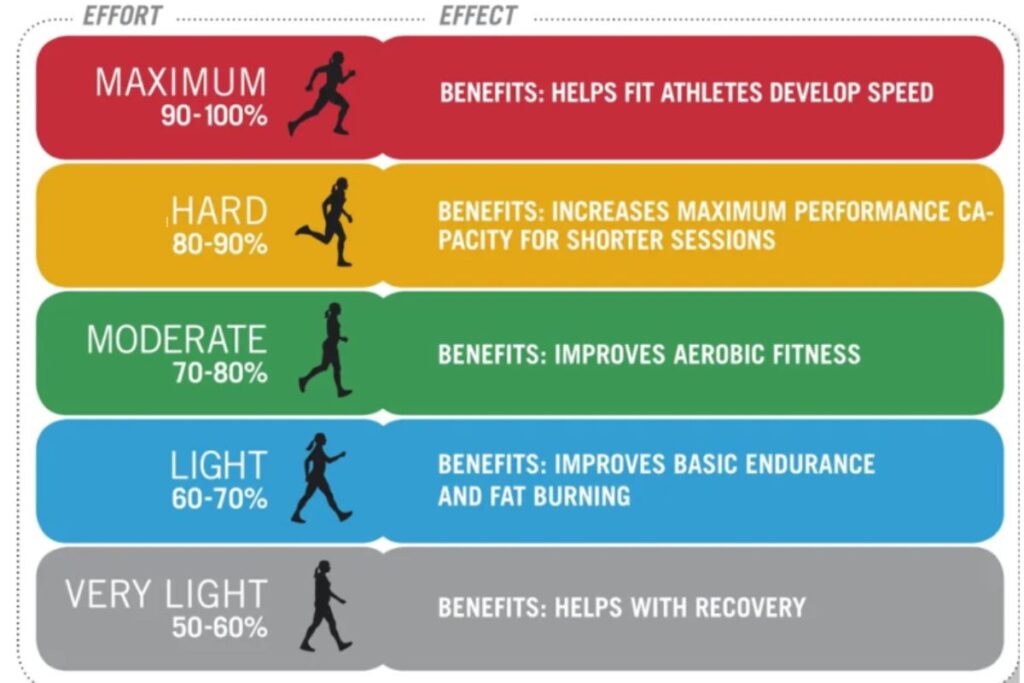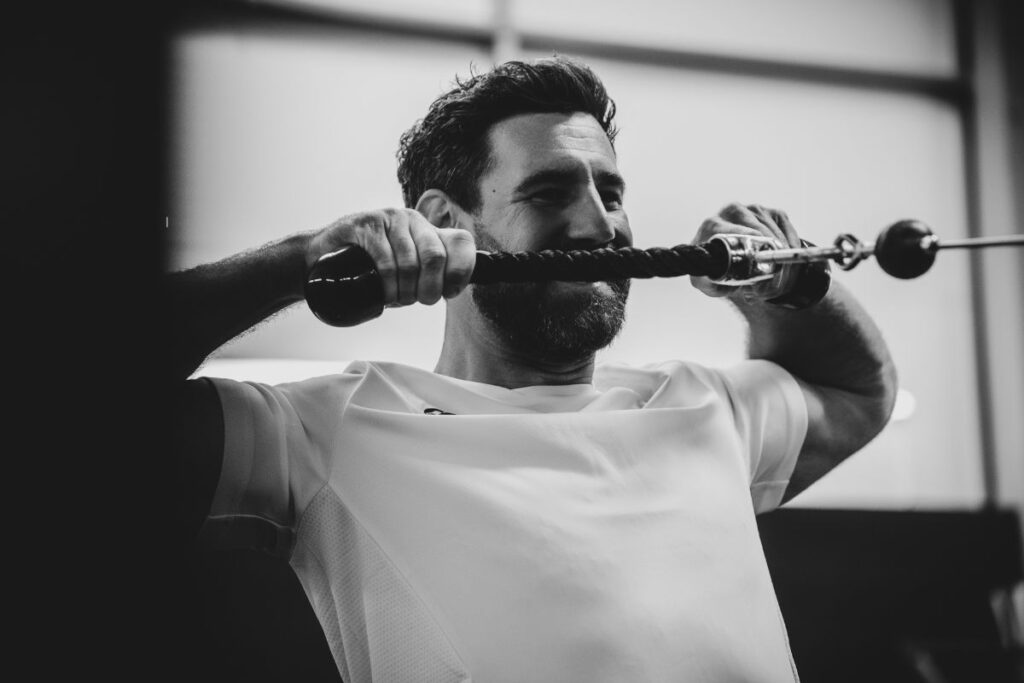For both athletes and those embarking on their fitness journey, understanding heart rate training zones is crucial to training effectively. Your heart plays an essential role during exercise, beating faster to circulate more oxygen and nutrients to your muscles.
Before diving into the specific training zones, it’s important to understand how your heart responds to physical activity and how knowing your zones can help you manage intensity, recovery, and overall performance.
How Our Heart Rate Functions During Training
During physical activity, the heart beats both faster and with greater strength, with its rate increasing in response to the intensity of the exercise. We each have a personal resting heart rate, a minimum heart rate, and a maximum heart rate. Between these values lie various heart rate zones, each associated with different training intensities and benefits.
During exercise, your heart rate increases in line with how hard you’re working. Everyone has three key heart rate values:
- Resting heart rate: your lowest heart rate when fully relaxed
- Maximum heart rate (MHR): the highest rate your heart can reach safely
- Training zones: the percentage ranges between those two numbers that correspond to different levels of intensity
A common method for finding your maximum heart rate is:
220 – your age = Maximum Heart Rate
For example, a 30-year-old would have an estimated maximum heart rate of around 190 beats per minute. From this, you can then establish your heart rate training zones as percentages of that maximum.
Ready to take your performance to the next level? At SW7, we offer expert-led fitness programmes designed for everyone. Start your 7-day free trial today.
How to Calculate Your Heart Rate Training Zones
Your training zones are determined as percentages of your maximum heart rate. Each zone has its own purpose, helping you target the right intensity for your goal. Whether that’s recovery, conditioning, or improving your work capacity.

The 5 Heart Rate Training Zones Explained
There are generally five heart rate zones, each with a specific purpose and range based on your maximum heart rate (MHR), which is typically estimated as 220 minus your age.
Zone 1 – 50%-60% of Maximum – Very Light
Zone 1 corresponds to very light exercise. Activities such as walking or gentle cycling fall into this category. Exercising in this zone can help prepare the body and heart for more intense training or aid in recovery.
Zone 2 – 60%-70% of Maximum – Light
Training in Zone 2 should feel manageable yet slightly challenging. This zone is often associated with numerous benefits, as it helps establish a solid foundation of fitness.
Your body becomes more adept at oxidising fat, thereby enhancing endurance in activities like jogging, swimming, and cycling. It is commonly said that during Zone 2 activities, you should be able to maintain a conversation.
Zone 3 – 70%-80% of Maximum – Moderate
Working in Zone 3 requires a moderate effort; approximately 45% of the calories burned in this zone come from fat. This zone enhances the efficiency of your cardiovascular system, and it is here that lactic acid begins to accumulate in your muscles. If you experience a burning sensation in your legs while running, it is likely that you are operating in this zone or higher.
Zone 4 – 80%-90% of Maximum – Threshold
Zone 4 is characterised by high intensity. Your heart and muscles are exerting considerable effort, and you may only be able to sustain this level of intensity for around 2 to 10 minutes. This zone is primarily aimed at improving the body’s capacity to maintain high levels of exertion.
Zone 5 – 90%-100% of Maximum – Maximum
This zone represents an all-out effort, typically achieved only by athletes engaged in short bursts of speed or energy expenditure, such as 100m and 200m sprinters.
Exercise in this zone demands caution, as its strenuous nature places significant stress on the body. However, when approached correctly, it can be an effective method for developing peak speed.

Utilising Heart Rate Zones
Utilising various heart rate zones can yield a multitude of benefits, and strategically incorporating them into your training can elevate your performance to new heights.
Below is a summary of the advantages associated with each heart rate zone.
Zones 1 and 2, while not the most effective for fat burning, play a crucial role in building endurance and enhancing overall performance.
Zone 2, in particular, is ideal for active recovery days, as it places minimal stress on the central nervous system.
For those aiming to increase fitness or lose weight, Zones 3 and 4 are invaluable tools. Experts recommend engaging in this type of training three to five times a week for optimal results. A typical example of this training might involve running at a pace designed to improve the body’s ability to tolerate and clear lactate.
Conversely, training in Zone 5 is intense and should only be undertaken under the supervision of medical professionals or in close collaboration with a coach.

How We Can Help Your Training
If you’re looking for expert guidance to take your fitness journey to the next level, you’re in the right place. Discover our range of online fitness memberships, co-founded by rugby legend Sam Warburton OBE, offering expertly crafted programmes that instil an athlete’s mindset.
Take action today, and let SW7 guide you to the results you’ve always wanted.
And for more tips and insights from our knowledgeable team, check out our health & fitness advice page, covering topics like ‘Personal Trainer Vs Fitness App‘, ‘The 5 Best Strength Training Exercises‘ and ‘How Much Protein Do You Need to Build Muscle‘.
